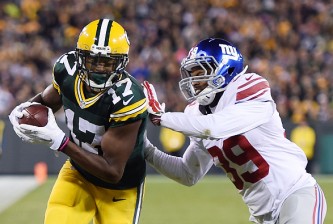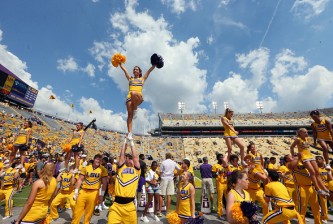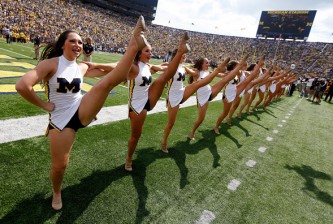The 2018 MLB season is technically far from over because we’re still waiting to see who captures October glory in the World Series. But in reality, 26 organizations have already turned the page to the offseason and are gearing up for the next few months leading into next March.
Some players are happy the regular season is in the rearview mirror, but there are also plenty that will look back on the past six months fondly, hoping they can carry that momentum into 2019. And then there is always the betting sites that keep fans happy whether their favorite team wins or loses, because they always have a chance to win money.
Baseball is a game defined by peaks and valleys, with the goal always being to maximize the peaks while minimizing the valleys as much as humanly possible. Plenty had an opportunity to make an impact this year, but some took more advantage of it than others. The following 10 players — five hitters and five starting pitchers — have managed to separate themselves from the pack in the best way possible throughout their respective 162-game schedules.
For the hitters, we’re going to evaluate and rank their performances by wRC+, while we’ll be using Skill-Interactive ERA (SIERA) to do the same thing for the starting pitchers.
Five Best Hitters of 2018
With wRC+ as our measuring stick, these five hitters rose above the rest in the leaderboards (we’ve included a few other statistics for good measure).

Mike Trout finds himself on top of yet another impressive list. The sky is also blue, just in case you were wondering. Back on Opening Day, we wondered if the young outfielder could keep improving his plate discipline. While his 20.4% strikeout rate increased for the first time since 2014, his 20.1% walk rate improved for the fourth consecutive season, and it also led the league among qualified hitters.
Trout won the wRC+ war, but Mookie Betts won the fWAR…war. After flirting with it in 2016 and 2017, the Boston Red Sox outfielder finally joined the 30-30 club thanks to his 32 dingers and 30 stolen bases. A chunk of this success can be attributed to career-best marks in line-drive rate (21.2%), pull rate (47.2%), soft-hit rate (12.2%), and hard-hit rate (44.5%).
Making these lists is always better with a teammate, right? J.D. Martinez was a massive hit during his first year in Beantown. With a second consecutive 40-homer campaign under his belt, he’s now slugged 88 homers in 1,138 plate appearances since the start of 2017. His .655 slugging percentage during that time leads all of baseball. Trout comes in second at .629, but they’re the only two with a mark over .600.
Christian Yelich doesn’t only appear to be the National League MVP front runner, but he automatically gets extra dap for being the only player here from the Senior Circuit. His 36 homers stand out for obvious reasons — he did that in just 655 plate appearances, but needed 1,354 trips to the plate between 2016-17 to hit 39 dingers for the Miami Marlins. Miller Park has been good to him. It’s also worth noting that the only month in which Yelich posted a hard-hit rate below 45.0% was May (and it was still 38.8%).
If the American League wasn’t so crowded at the top, Alex Bregman would get more love for MVP. Whatever love he does get, though, is well deserved. Among pitches he saw at least 200 times this year (four-seamer, two-seamer, slider, changeup, cutter, curveball, sinker), his lowest wRC+ was 123, which came against the cutter. None of the others fell below 150.

Oct 5, 2018; Houston, TX, USA; Houston Astros starting pitcher Justin Verlander (35) throws the baseball to first for an out against Cleveland Indians third baseman Josh Donaldson (not pictured) during the second inning in game one of the 2018 ALDS playoff baseball series at Minute Maid Park. Mandatory Credit: Troy Taormina-USA TODAY Sports
Five Best Starting Pitchers of 2018
It seems like pitchers are always evaluated by the same traditional metrics, such as win-loss record, ERA, WHIP, strikeouts per nine innings, and walks allowed per nine innings. This is why we go against the grain and evaluate pitcher performance by SIERA.
SIERA attempts to measure the underlying skill of a hurler, but unlike FIP and xFIP, it doesn’t ignore balls put in play, and also attempts to give a more accurate picture as to why certain pitchers are better than others. A good SIERA is just like a good ERA — the lower the better.
Here’s the group that distinguished themselves on the bump this year.

Justin Verlander’s first full year in Houston couldn’t have gone much better. His 2.52 ERA is the lowest it’s been since 2011 — you know, when he won the AL Cy Young and MVP award — while those strikeout and walk rates are both career-best marks. For someone with as impressive of a resume as Verlander, achieving those feats in his age-35 season is remarkable. Pretty soon Verlander will be considering retirement and will spend his summers using a skimmer for above ground pools instead of pitching. But for now, he remains one of the best in the game.
Max Scherzer is just a model of dominant consistency. This is his sixth straight season of hurling 200-plus innings with at least 5.2 fWAR, and he’s also managed to increase his strikeout rate in each of the last four years. His slider usage dropped more than 12 percentage points in favor of a cutter, which he threw at a 9.8% clip. Opposing hitters posted a 108 wRC+ against it, but the right-hander saw his strikeout rate with that pitch rise up to 41.9%.
Jacob deGrom is the man that has a good chance of stopping Scherzer from taking home his third straight NL Cy Young award, and it’ll take a historic season to do so. Since 2000, the only starting pitcher to finish with an ERA lower than deGrom is Zack Greinke in 2015 (1.66). The right-hander finished a month with an ERA above 1.80 just twice (April at 2.06, and June at 2.36).
Patrick Corbin is headed toward free agency, so he picked a great time to have a career year. His slider usage crept up to a ridiculous 41.3% clip, finishing second in baseball to only Jhoulys Chacin (44.0%). Corbin’s 2.15 slider value on a per-100-pitch basis was seventh-best in the league, while hitters mustered just a 25 wRC+, .432 OPS, and a 54.5% strikeout rate against the offering.
Gerrit Cole’s overall production took a complete 180-degree turn from his recent days in Pittsburgh. His contact rate dropped eight percentage points compared to 2017, while his strikeout rate went up 11 percentage points, his swinging-strike rate increased nearly five percentage points, and he locked in single-season career bests in countless categories. Committing to throw higher in the strike zone also led to a 36.0% ground-ball rate, a number that never dipped below 45.0% in a season entering 2018.






















